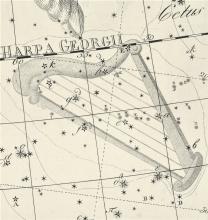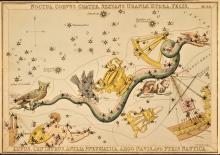Listen to today's episode of StarDate on the web the same day it airs in high-quality streaming audio without any extra ads or announcements. Choose a $8 one-month pass, or listen every day for a year for just $30.
You are here
Leo Minor
The night sky is like a quilt with 88 patches. Each “patch” is a constellation. In ancient times, though, the quilt had a lot of blank spaces. The blanks were patches of sky with no bright stars. No one bothered to create pictures or stories for them.
Astronomers began to fill in those patches in the 17th century. In 1687, for example, Johannes Hevelius created ten new constellations. Seven of them are still in use today.
That includes Leo Minor, the little lion. It represents a cub of Leo, the lion.
Its brightest star is 46 Leonis Minoris. The star is actually quite impressive. But it’s almost a hundred light-years away, so it looks faint.
The star is 1.7 times the mass of the Sun, and about eight times wider than the Sun. It’s passed the end of its normal lifetime, so it’s puffed up to several times its original size. That’s made its surface much cooler, so it shines yellow-orange.
If you lined up the Sun and 46 Leonis Minoris at the same distance, the other star would look about 20 times brighter. Because it’s much cooler, though, a lot of its light is in the infrared. So if you add up all forms of energy, 46 Leonis Minoris would shine almost 35 times brighter than the Sun — a bright beacon in a faint constellation.
Leo Minor is near Leo, which is low in the eastern sky in early evening. Leo Minor stands to the upper left of Leo’s head and mane, which form a hook, with the bright star Regulus at the bottom.
Script by Damond Benningfield





